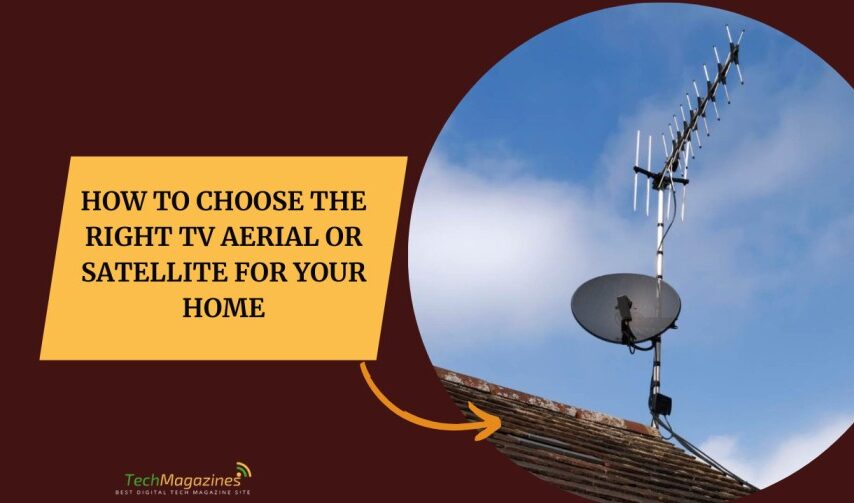Understanding TV Aerials and Satellites
As technology continues to evolve, the way we consume television content has transformed dramatically. Whether you prefer traditional broadcasting or satellite services, choosing the right equipment is crucial for optimal viewing experiences. This guide will help you navigate the options available for TV aerials and satellites, ensuring you make an informed decision for your home.
Factors to Consider When Choosing
Before diving into the specifics of aerials and satellites, it’s essential to consider several key factors that will influence your choice.
#### Location and Signal Strength
The first step in selecting the right equipment is assessing your location. Signal strength varies significantly depending on geographical factors such as hills, buildings, and distance from transmission towers. Use online tools or apps that can help you determine your area’s signal strength and the direction of local transmitters. If you live in a remote area, a satellite dish may be your best option for reliable reception.
#### Type of Programming
Consider the type of programming you wish to access. Are you interested in local channels, premium networks, or international broadcasts? If your focus is primarily on local channels, a quality aerial might suffice. However, if you’re looking for a broader range of content, including international programming, a satellite service may be more suitable.
#### Budget Considerations
Your budget will play a significant role in your decision-making process. Aerials are generally less expensive than satellite systems, but installation costs can vary. Satellite services often come with monthly fees, so factor in both initial and long-term costs when making your choice.
Types of TV Aerials
Once you’ve considered the factors mentioned above, it’s time to explore the types of TV aerials available.
#### Indoor Aerials
Indoor aerials are a convenient option for those who want to avoid the hassle of installation. They are easy to set up and can often be placed near windows for better reception. However, indoor aerials may not provide the same signal strength as outdoor models, especially in areas with weak signals.
#### Outdoor Aerials
For those living in areas with challenging reception conditions, outdoor aerials are typically more effective. They are designed to withstand various weather conditions and can capture signals from greater distances. When choosing an outdoor aerial, look for models that are specifically designed for your area’s signal strength and frequency range.
Satellite Options
If you’ve determined that a satellite service is more aligned with your needs, there are various options available to consider.
#### Types of Satellite Dishes
Satellite dishes come in different sizes and configurations. The most common types are:
– **Standard Dishes**: These are typically around 60-90 cm in diameter and are suitable for most residential needs.
– **Large Dishes**: For areas with weak signals or for those wanting access to a wider range of channels, larger dishes may be necessary.
– **Multi-satellite Dishes**: These allow you to receive signals from multiple satellites and can be beneficial for accessing diverse programming options.
#### Subscription Services
When selecting a satellite service provider, research the available subscription packages. Some providers offer comprehensive channel line-ups along with additional features like on-demand content and DVR capabilities. Compare the offerings to find a package that suits your viewing preferences and budget.
Installation Tips
Proper installation is crucial for both aerials and satellite dishes to ensure optimal performance. Here are some tips to keep in mind:
– **Professional Installation**: While DIY installation is possible, hiring a professional ensures that the equipment is optimally positioned for maximum signal quality.
– **Check Local Regulations**: Before installation, check any local regulations regarding aerials and satellite dishes, particularly if you live in a rented property or a community with specific guidelines.
– **Positioning**: For aerials, ensure they are mounted as high as possible and pointed towards the nearest transmitter. For satellite dishes, a clear line of sight to the satellite is essential.
Maintenance and Troubleshooting
Once your aerial or satellite system is installed, regular maintenance can help ensure consistent performance.
– **Inspect for Damage**: Periodically check your equipment for any signs of wear or damage caused by weather elements.
– **Signal Testing**: If you experience signal issues, use built-in tools on your TV or receiver to test signal strength and quality.
– **Repositioning**: Sometimes simple repositioning of the aerial or dish can resolve reception issues caused by interference from new structures or foliage growth.
Embracing Your Viewing Experience
Choosing the right TV aerial or satellite service can significantly enhance your home entertainment experience. By carefully considering your location, programming preferences, and budget constraints, you can select the perfect solution tailored to your needs.
With the right equipment in place and proper installation and maintenance, you’ll enjoy crisp images and clear sounds that transform your living room into a personal cinema. Whether you’re binge-watching your favourite series or catching up on live sports events, making an informed choice will ensure that every viewing experience is enjoyable and satisfying.
So take the plunge into the world of television technology—your next binge-worthy series awaits!








